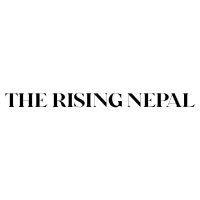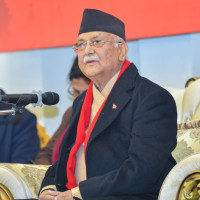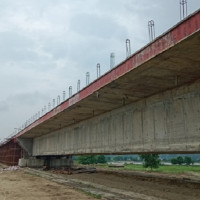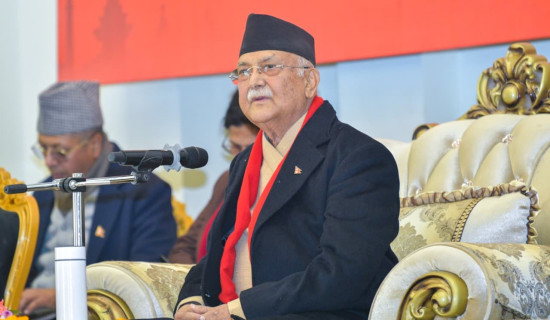- Saturday, 10 January 2026
Harness Enormous Tourism Potential
With her unmatched topography coupled with stunning sceneries and floral and faunal diversity, and rich cultural heritage, Nepal holds a lot of comparative advantages in tourism. Being home to hundreds of beautiful snow-clad mountains, including Sagarmatha, the world’s tallest peak, the country is considered the global leader in mountain tourism. Each year, this appealing tourist destination hosts lots of foreign adventurers like trekkers and mountaineers, water sports enthusiasts, and other tourists showing their keen curiosity in cultural tours and jungle safaris. In her seven-plus decades of tourism history, this Himalayan country has made a notable success in the development of the multifaceted travel business.
However, much remains to be done when it comes to creating additional tourist attractions and infrastructure that are essential for achieving sustained tourism growth. The country also needs to put additional efforts into promoting and marketing its unique tourism products in the international market more effectively so as to entice more tourists. Although Nepal welcomes tourists from many countries around the world, annual visitor arrivals hover just around one million. In 2024, the country received a little more than 1.14 million international tourists. This is the highest figure the country has recorded in the post-COVID scenario. Last year’s figures show that tourist arrivals in the country reached almost pre-pandemic levels. However, those numbers are not sufficient in view of the country’s vast tourism potential.
Foreign exchange earnings
In 2019, Nepal was able to play host to as many as 1.19 million foreign tourists. But, like many other destinations worldwide, the country too witnessed a record drop in tourist arrivals in 2020 and 2021 due to the global health emergency. The country had targeted to lure one million international travellers about 15 years ago. ‘Nepal Tourism Year-2011’, a national tourism campaign, was organised in that year to reinvigorate the tourism industry. The target, however, could not be met owing to several internal and external factors.
Meanwhile, a total of 647,882 foreign tourists entered the country by air alone in the first seven months this year. If the imminent autumn season remains favourable for the tourism sector, this year’s total tourist arrivals may slightly surpass pre-pandemic levels, bringing cheers to all tourism stakeholders. Tourism holds a lot of importance to the economy as it is a key source of foreign exchange earnings and job creation. Though tourism is still a seasonal business, it provides direct and indirect jobs to hundreds of thousands of people.
The country also makes millions of dollars from mountaineering permit fees alone, earning as much as US$5.8 million in this year’s spring season. As there has been a growing attraction among mountaineers towards Sagarmatha (Mt. Everest) over the years, the government receives a lot of revenue by issuing permits for them to attempt this mountain. Because the government has decided to increase the Everest permit fee from US$11,000 to US$15,000 for international climbers, the country is expected to collect more mountaineering revenue in the coming years. The revised fee structure is coming into effect from this year’s September 1. However, the permit fees vary according to the seasons.
Despite uncertainties triggered by COVID-19, Kathmandu, Lumbini, Chitwan, Pokhara, Nepalgunj, Jhapa, Morang, Sunsari and numerous other parts across the country have seen huge investments in numerous tourism-related businesses, including accommodation facilities, in recent years. Hoteliers often claim that the country’s existing hotel beds are more than enough to cater to well over 3.5 million tourists annually. Many hoteliers in Lumbini and its neighbouring areas have time and again drawn the government’s serious attention towards operationalising Gautam Buddha International Airport (GBIA) based in Bhairahawa. According to them, their investments worth billions of rupees have gone down the drain as the inflow of tourists into those areas has not increased owing to the government’s inability to run the airport successfully. Cable cars, zip-flyers and paragliding facilities have also been available in different areas across the country.
India, the United States of America (USA), China, the United Kingdom (UK) and Bangladesh are the top five tourist source markets for Nepal. Despite being physically close to the two ‘Asian giants’ (India and China), we have not been successful in attracting as many tourists from these neighbours as we should have. A lack of better connectivity via land and air and effective marketing are the main reasons for this. Safe and smooth roads are essential for bringing in more tourists. While air traffic pressure has been quite high on Kathmandu’s Tribhuvan International Airport (TIA), two other newly-built airports (GBIA and Pokhara International Airport) have not been in operation in full swing. Showing air safety concerns, the European Union (EU) has put a ban on Nepali airlines from flying into the European skies since 2013. This prohibition has become a big setback for Nepal’s tourism sector. Nepal would have been able to receive a significant number of tourists from various markets, like Europe, Australia, Japan and Vietnam, if there had been direct flights.
Preferred destination
Amid this situation, Nepal and Vietnam have agreed to explore possibilities of having a direct air link between the two countries to enhance cooperation in tourism and cultural exchanges. Since many Vietnamese are interested in Buddhism and culture, and adventure activities, they may find Nepal a preferred potential destination. As part of marking the 75th anniversary of the establishment of diplomatic relations between Nepal and Vietnam, Vietnamese Vice President Vo Thi Anh Xuan was in Kathmandu last week at the invitation of her Nepali counterpart Ramsahay Prasad Yadav.
With a significant increase in the affluent middle class in Vietnam, the number of outbound Vietnamese tourists has been on the rise considerably annually. Records show that about 4.1 million Vietnamese travellers made their trips abroad in the first half of 2025 alone. Once direct flights between Nepal and Vietnam start, the Himalayan country is sure to attract a lot of Vietnamese tourists.
(The author is a former deputy executive editor of this daily.)

















